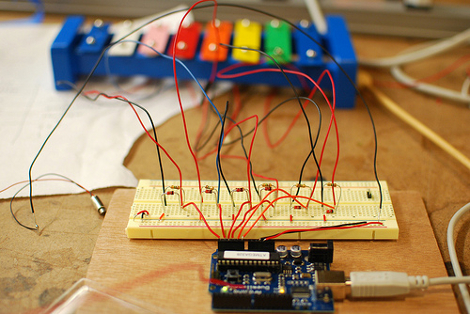
[Computergeek] made an Arduino Shield in order to use it as an Apple remote. We like the construction technique that he used; taking perf-board and soldering the circuit and using stripped wire to interface with the pin sockets on the Arduino. He’s written the code needed to function as an Apple Remote but this shield has a lot more potential. This is an excellent opportunity to delve into the different IR protocols out there and create a universal remote for all of your random devices. We’d also want to give it a try as a TV-B-Gone.
The parts are easy to find or salvage without putting in an order. We’re not certain about his design, he should probably have invited a resistor to the party the two IR LEDs are having.














